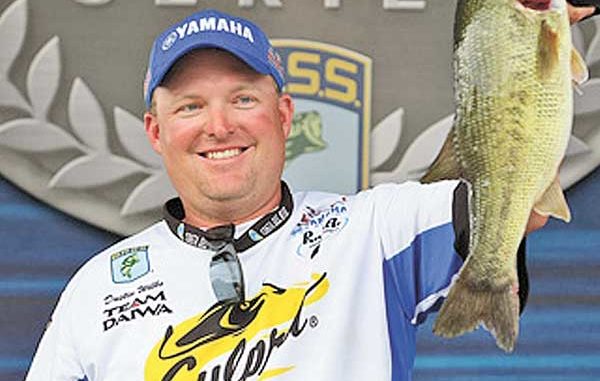
If you’re not a structure fisherman, this article is for you. The ability to catch bass in August can be as simple as finding the green grass.
In every body of water, many fish simply stay on the bank to take advantage of feeding opportunities that are not available to offshore fish. Sometimes, the offshore fish migrate into the shallow grass to feed. In North Carolina rivers, it’s all about current and weeds. In lakes, current and depth are equally important when searching for a strong weed bite.
Fisherman always say “grass” when describing aquatic weeds. In most cases, when fishermen talk about grass, they mean hydrilla, milfoil, elodea or water willow. Hydrilla, milfoil, and elodea are the best for holding big groups of fish and boosting the overall health of a lake. Elodea is without a doubt my favorite, but I only know one lake in North Carolina that holds it.
Dock owners hate grass, but fish thrive in it. Lily pads are also a good place to look for summer bass. We also have some lakes with primrose, which forms mats on the surface. The backs of coves in Shearon Harris Lake are full of primrose.
Water willow is commonly called “bank grass” by many fishermen. It has willow-shaped leaves and a strong stalk and grows in about four feet of water or less, usually around banks. Water willow is common to many lakes, with Lake Gaston and the Rocky Mount reservoir good examples.
There are countless ways to fish vegetation, but the most popular by far is to flip or pitch plastics and jigs. Flipping with a 1-ounce or larger weight when the weeds become matted is an under-used method in North Carolina. Burning lipless crankbaits can be good in the summer, but that’s usually a better strategy in late winter. Topwaters early and late can be good. Swimming a jig is very good in water willow.
Just about any lure can be used to effectively fish grass. Water willow and primrose must be fished with a weedless lure, as the vines are so tough you can’t rip a bait out like you can in hydrilla or milfoil.
The location of the weeds is the most-important factor. Those closest to deep water or those with current pushing into them are usually the best.
Sometimes, the nastiest and thickest part of a primrose bed in the back of a cove can hold a big bass as well, and it’s worth checking out. If it’s combined with another type of weed or wood — even better. I like a 1- to 1½-ounce and 65-pound braid with a 7-foot-6 to 8-foot, heavy-action Daiwa flipping stick.
The bait needs to be compact enough to slip through the cover without its appendages getting wrapped around the weeds. I like Culprit’s Water Beetle in 3- and 5-inch sizes for its bulk. It holds a hook much better than other baits of this style.
If a strong hydrilla line forms, simply fishing the edge with a jig, big worm, or deep-diving crankbait can be awesome. Often, a hydrilla edge will be more than 10 feet deep, and it becomes the structure because it creates a wall. Bass are able to swim through that wall though. Pay special attention to any points or holes in the grass. Holes often represent a change in the bottom composition and can hold big school of bass.
I really like to find small, thick patches of lily pads on a bank with current. Many times, they will just be a little further out than the water willow, and they will be bass magnets. I don’t have much success out of large patches in the summer, as they are usually in slack water with a mud bottom — check those in the spring. When approaching lily pads, I like to cast to where the stalks are, not necessarily the pad.
Grass is truly a bass magnet year-round, and when targeted correctly, it can help you avoid fishing the deep stuff in August.



Be the first to comment